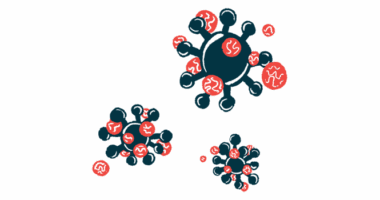2 simple nutrients may be effective new screening tool for ICP
Choline, dimethylglycine could help monitor the pregnancy-related liver disease

A new study has identified two dietary nutrients, choline and dimethylglycine, as effective potential biomarkers for diagnosing and monitoring intrahepatic cholestasis of pregnancy (ICP).
Women with ICP were found to have significantly higher blood levels of both molecules compared to healthy controls. Crucially, levels of both choline and dimethylglycine dropped significantly in patients who were treated with ursodeoxycholic acid (UDCA), the first-line treatment for the condition and marketed in the U.S. under the brand names Actigall and Urso.
The findings suggest that testing for these two molecules, which are essential nutrients obtained through diet, may offer a reliable new tool for ICP screening and tracking treatment efficacy. This is critical given the current challenges of varied symptoms and diagnostic limits, researchers wrote.
The study, “Screening and Validation Serum Potential Biomarkers for Intrahepatic Cholestasis of Pregnancy Comparison to Healthy Controls by 1H-NMR and UPLC–MS/MS,” was published in Biomedical Chromatography and was conducted by a team of researchers in China.
Research to identify new ICP biomarkers
ICP develops during pregnancy when the digestive fluid bile doesn’t flow properly within the liver, where it is produced. As a result, bile acids, the main components of bile, build up in the liver, affecting its function, and leak into the bloodstream, causing symptoms such as severe itchiness.
Left untreated, the disease poses potential risks for both the mother and the baby.
Diagnosing ICP can be challenging because symptoms vary and available diagnostic markers are not always reliable.
To identify potential ICP biomarkers, the researchers analyzed the levels of metabolites in blood samples from 57 pregnant women with ICP — 40 untreated and 17 treated with UDCA to help improve bile flow — and 40 healthy pregnant women.
Metabolites are small molecules produced during metabolism, the process of breaking down food, drugs, chemicals, or the body’s tissue into materials needed for life.
The team first used a technique called proton nuclear magnetic resonance spectroscopy (1H-NMR) in 20 of the ICP samples and 20 control samples. Results showed the metabolism of amino acids (protein’s building blocks) and choline “were significantly altered” in the ICP group, the researchers wrote.
Choline is an essential nutrient, meaning the body cannot produce it on its own and must therefore be obtained through diet. In the liver, it is involved in processes that help remove fat from the organ and release bile salts into the tubes that transport bile into the intestines.
Because “detecting choline pathway-related metabolites using H-NMR was limited,” the researchers turned to another technique called ultraperformance liquid chromatography coupled with tandem mass spectrometry (UPLC-MS/MS).
They used this method to simultaneously measure eight choline-related metabolites in samples from 40 ICP patients and 40 healthy controls.
They found women with ICP had significantly higher blood levels of five of these molecules: choline (by 92%), dimethylglycine (by 163.1%), methionine (by 37.7%), betaine (by 22%), and cystathionine (by 13.6%).
Compared with untreated ICP cases, those treated with UDCA had significantly lower levels of both choline (by 21%) and dimethylglycine (by 32.5%). Dimethylglycine is a derivative of the amino acid glycine and a key metabolite in the metabolic pathway that converts choline into glycine.
Choline and dimethylglycine were also the metabolites showing the greatest discriminative potential between women with ICP and those without, distinguishing these two groups with an accuracy of more than 84%.
Combining the levels of these two metabolites allowed the researchers to discriminate between women with ICP and those without it with an 88% accuracy.
“Our study identifies serum choline and dimethylglycine as novel and highly effective potential biomarkers for ICP,” the researchers wrote. “Their significant reduction following UDCA treatment … highlights their utility in monitoring the therapeutic efficacy of UDCA and offers a new perspective for understanding the metabolic mechanisms underlying ICP and its treatment.”
Still, larger, multicenter studies are needed to confirm their utility in ICP, the team noted.







